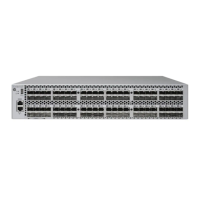-s
creates a self-extracting archive (object file with file code 700). The self-extracting archive can
be extracted by running the archive with any options. For example:
run archive, *.*.*, vol $vol.subvol, listall
The self-extracting file should not be manipulated with NLD or NOFT or in any other way.
Otherwise the self-extracting structure is corrupted, and the archive can no longer be used.
-c 'params'
creates a self-extracting archive that automatically executes the specified UNPAK command
when run.
For example, to create a self-extracting program SETUP and store an arguments string *.*.*
,... in the file:
PAK -s -c '*.*.*, map names *.*.* to *, keep, listall' SETUP,*
If you run SETUP without any arguments:
RUN SETUP
It decompresses as if it were executed with:
RUN SETUP *.*.*, map names *.*.* to *, keep, listall
• If any arguments are given, they are used. The stored arguments are ignored.
• If you specify -c, the -s option is implied. You need not specify -s.
-after 'command'
specifies a TACL command that is automatically executed after the files are restored. Use this
option only when creating self-extracting files, in which case you must also specify -s.
If you specify -after 'command', the self-extracting code executes the specified TACL
command after restoring the files. This is intended for software installation to start an automatic
software installation macro that can also ask the user for information.
The command is executed as:
1. PAK creates a temporary file (named CTMPnnnn) and writes the command to that file.
2. A TACL process is started using this file as the IN file and PAK's OUT file as the OUT file
(usually the terminal).
3. The temporary file is purged after the TACL process completes.
If the command needs any input from the user, it must be programmed as a TACL macro that
first changes its IN and OUT files to the user's terminal. After that, normal I/O to the terminal
can be performed from the macro. However, if the macro starts any programs, they again use
$RECEIVE, which usually means that the programs fail. For this reason, the programs should
be started with the /INLINE/ option or with the INV or OUTV options.
-ext extent-size
specifies the extent size of the archive (in pages). extent-size can be any value in the
range 1 through 65535. The default is 72 pages. The -ext and -max options together
determine the maximum size of the archive file or each file for multifile archives. See
Considerations (page 121).
-max maxextents
specifies the maxextents value of the archive file. maxextents can be any value in the
range 16 through 978. The default is 900. The -max and -ext options together determine
the maximum size of the archive file or each file for multifile archives. See Considerations
(page 121).
-backup backup-program
specifies the BACKUP object to use. The default is $SYSTEM.SYSnn.BACKUP. This can even
be on another system (for example, \node.$SYSTEM.SYSTEM.BACKUP).
PAK Command Options 119

